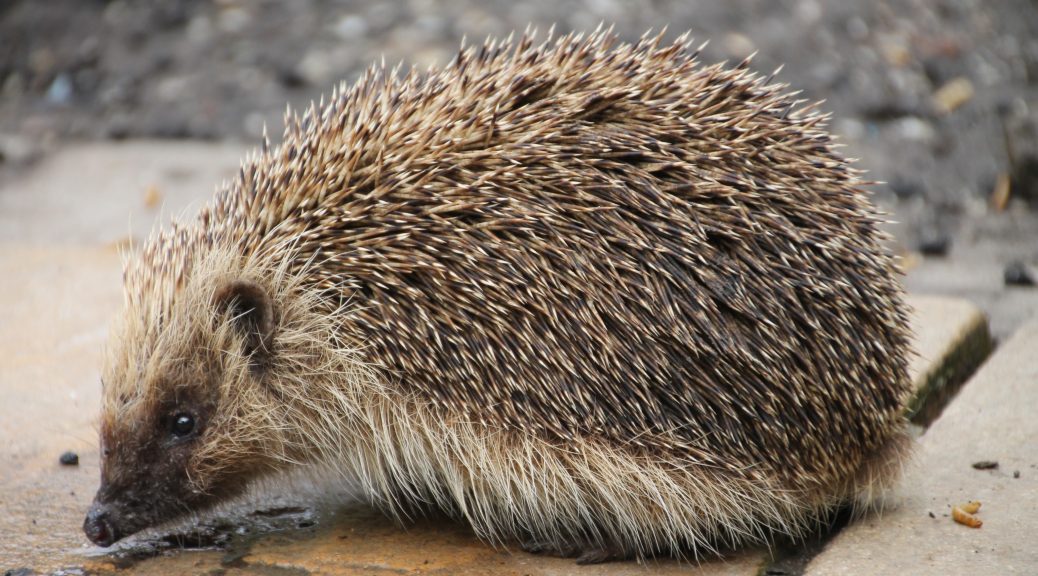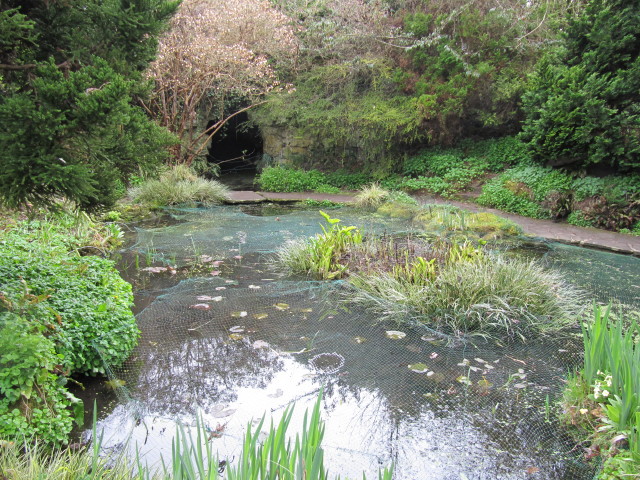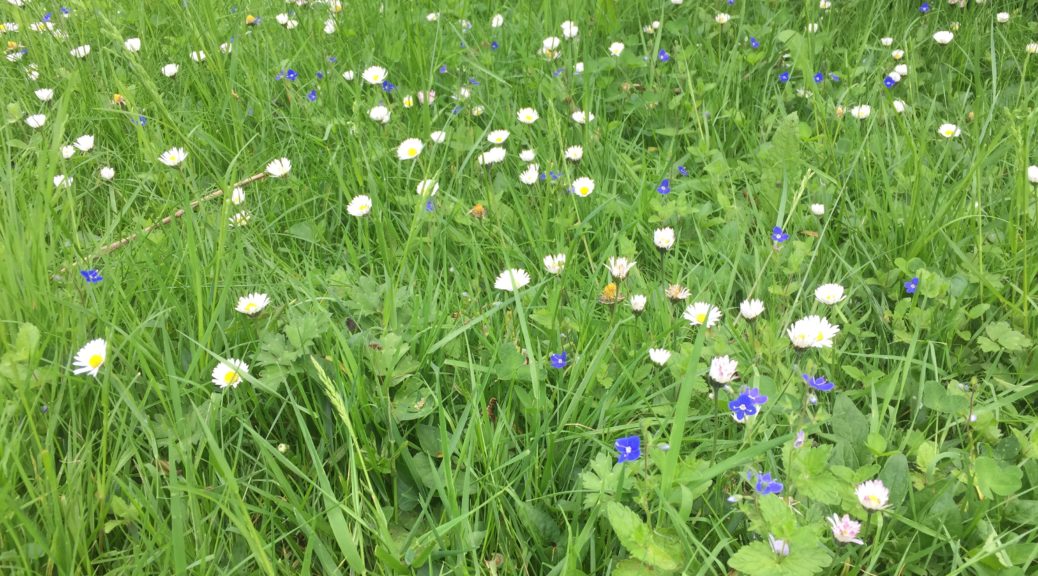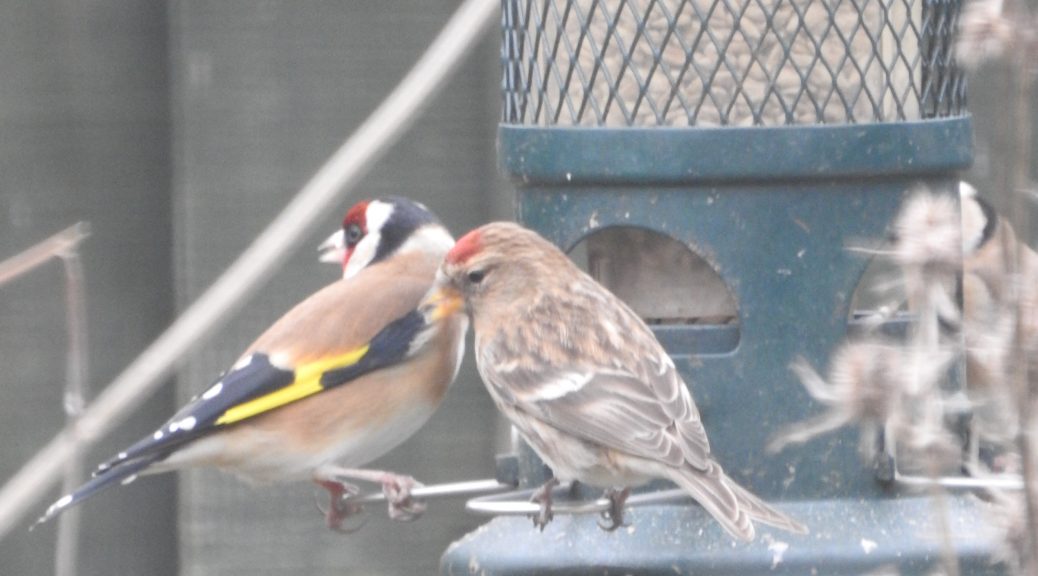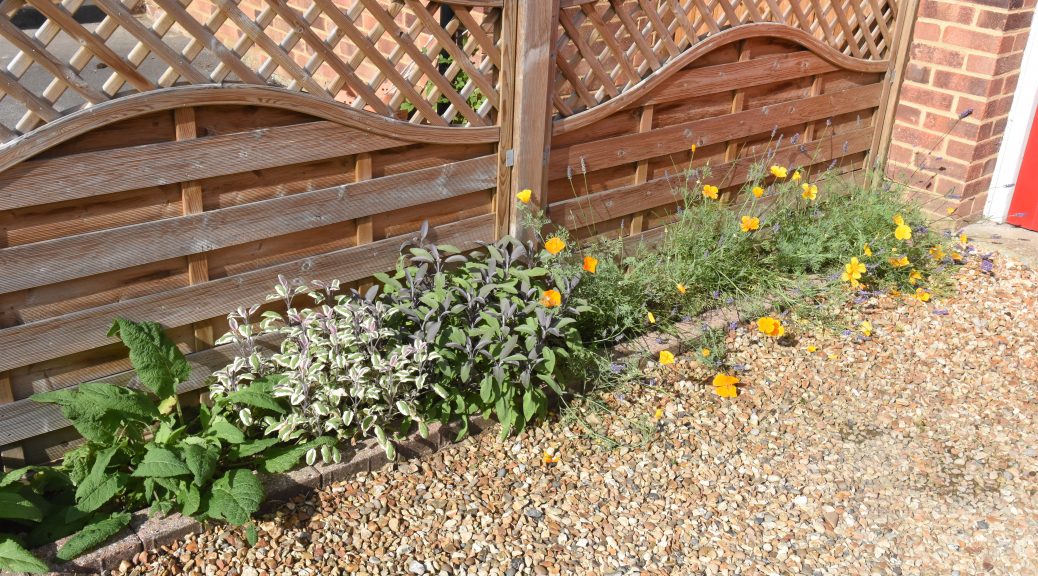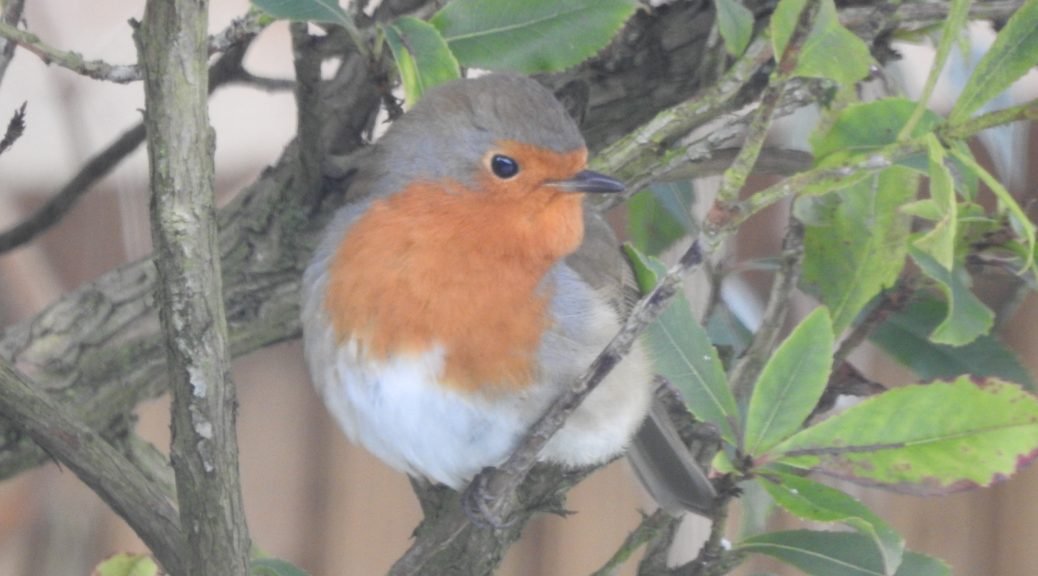The Express and Star reports mowing the lawn just once a month – and leaving some areas to grow long – provides a huge boost to flowers, bees and other wildlife, experts have said. The “Mohican” haircut approach to mowing is being recommended by wildlife charity Plantlife, after a citizen survey of lawns revealed they can support 200 different flowers and generate huge amounts of nectar for wildlife.
Tag Archives: garden
It’s time to rip up fake grass to save birds and bees

The Metro reports artificial grass creates a ‘desert’ and should be removed to help wildlife, experts have said. The fake turf is becoming a common sight around the UK, chosen by many because it requires little maintenance. But it is doing harm to the insects, birds and other wildlife that live here and have seen their habitat shrink.
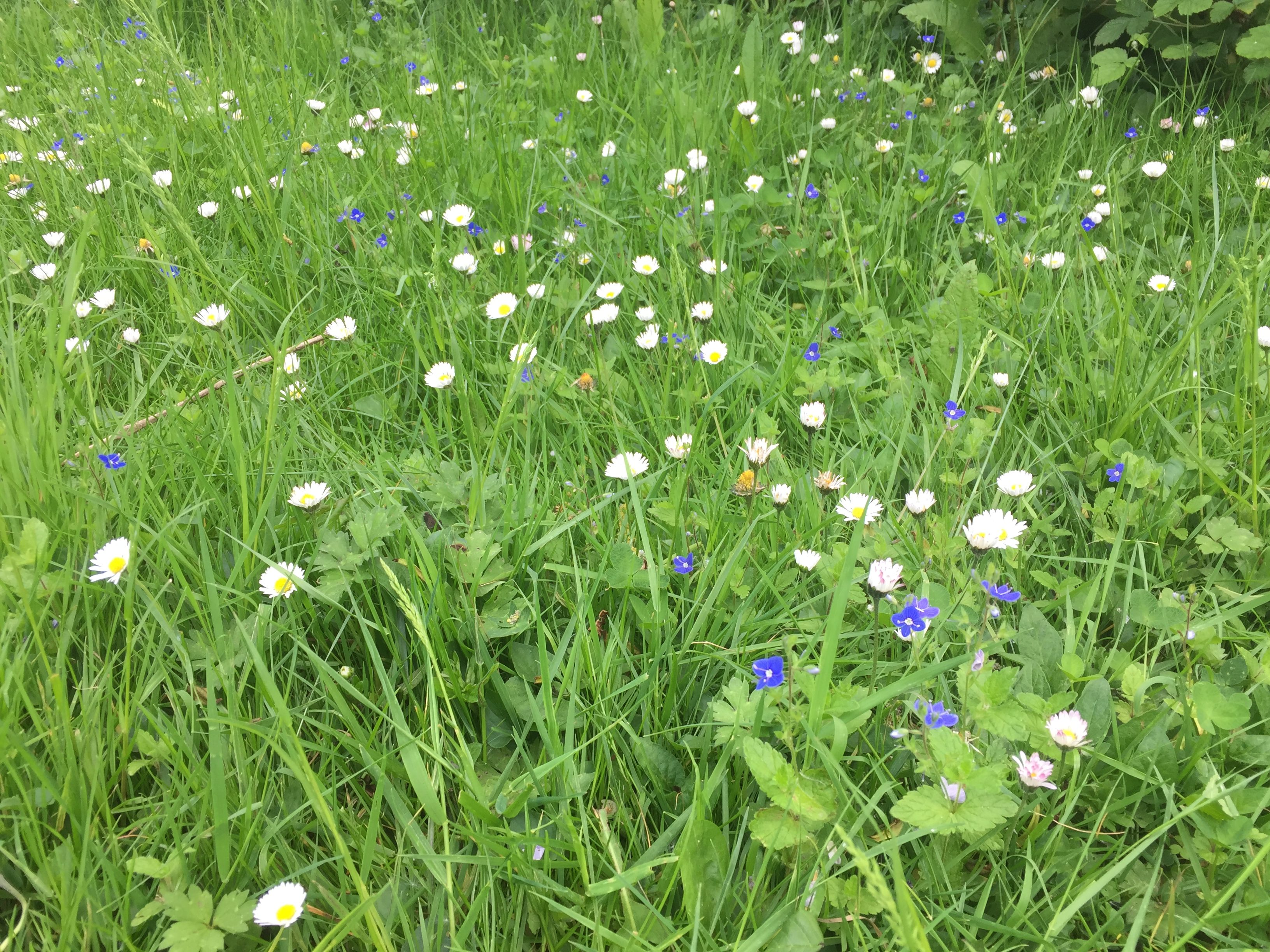
Top photo of artificial grass by Perfect Grass under creative commons. Bottom photo of natural grass in a Normandy garden.
Coronavirus: Keeping your garden flourishing during lockdown
The BBC report that for many of us trapped in our homes during the coronavirus outbreak, our gardens offer sanctuary.
But what plants, insects and animals can we expect to see at this time of year? And how can we help everything flourish?
Nick Acheson, from Norfolk Wildlife Trust, filmed this report from his back garden explaining what to look out and what to do as spring comes into full swing.
Bring in your football and badminton nets to save hedgehogs, RSPCA asks
The Telegraph report hedgehogs are dying because people are leaving netting out in their gardens, the RSPCA has warned.
The leading animal charity says that dozens of the small, spikey mammals have become entangled in football, badminton and pond nets causing fatal injuries and urged people to pack their equipment away.
Dig a pond (or rewild an old one) and nature will love you for it
Kate Bradbury writes in the Telegraph – My new pond is the heartbeat of the garden. It’s only a few weeks old, the plants are still small and the grass I sowed around the edge is but a five o’clock shadow on its muddy banks. And yet it’s permanently busy: this week I can’t see for house sparrows, and have spent hours laughing at the newly-fledged chicks taking their first bath.
Two blackbirds visit regularly for a drink and a wash, there are robins, goldfinches and tits, plus a huge herring gull that jumps in with an enormous splash and swims around in contented circles.
Photo of wildlife pond at Highdown by Leonora (Ellie) Enking under creative commons.
Gardeners urged to let lawns run wild and count flowers to help save bees
The Independent reports while many gardeners prize a well-maintained lawn, conservationists are urging people to leave their mowers in the shed and count wildflowers instead. Wildflower-studded lawns are an increasingly important source of nectar for pollinators such as bees and butterflies, wildlife charity Plantlife said.
The charity is asking people to take part in a “citizen science” project to count the daisies, dandelions and other blooms on their lawn to help experts work out more precisely how important they are for nature.
Garden feeders are supporting rising numbers of urban birds
The Guardian reports the increasingly appetising buffet provided for garden birds, from sunflower hearts to suet cakes, is supporting a rising number and greater diversity of species in Britain’s urban areas, according to research.
In the 1970s, half of all birds using garden feeders belonged to just two species, the sparrow and starling, but by the 2010s the number of species making up the same proportion had tripled, with goldfinches, woodpigeons and long-tailed tits soaring in number because of the food on offer.
At least half of British homeowners feed garden birds and researchers writing in Nature Communications found they support 133 bird species – more than half of the country’s species – and are reshaping urban bird populations.
Get your garden and its wildlife off to a good start this spring
The OBSERVER reports that the seasons seem topsy-turvy, but this is still a time of new beginnings. Here’s how to help your flowerbeds and veg plots thrive. Flower power – as soil warms, it’s time to plant perennials, but don’t just impulse-buy the first thing you see that promises pretty flowers on the label. If your garden got frazzled by the weather last summer, put drought-resistant plants that double as pollinator magnets to the top of your list.
Hungry hedgehogs breaking their winter hibernation can roam up to 2km in a night in search of food, but only if their path isn’t blocked by fences and walls. Consider cutting a hedgehog hole into existing fences or, if winter storms mean you need to replace panels, fit hog-friendly gravel boards at the base.
Once hedgehogs are in your garden, make them welcome by setting up a feeding and watering station in a sheltered spot: a dish of cat biscuits or specialist hog food are ideal. Dishes of fresh water will help hogs and other wildlife: an old dustbin lid set into the ground will make for easy access; add a pile of stones on one side so bees can come for a drink, too.
RSPB Big Garden Birdwatch 2018 Results
The 2018 results for the RPSB’s Big Garden Birdwatch have been released. The headlines:
- House sparrows were still top the sightings list.
- Siskin and brambling numbers were up.
- Small birds have overall increased.
- Goldfinches were seen in over two-thirds of gardens.
- Greenfinch sightings increased by 5% on last year.
- Blackbird sightings were down by 18%.
- Robin sightings were down by 12%.
- Changes could be down to a milder winter meaning more food elsehere so birds weren’t so reliant on gardens, good/bad breeding seasons and other factors.
The rankings:-
- House sparrows
- Starling
- Blue tit
- Blackbird
- Woodpigeon
- Goldfinch
- Great tit
- Robin
- Long-tailed tit
- Chaffinch
Do look at the results from the RPSB (Royal Society for the Protection of Birds) for more detail and explanation. And do consider participating next year. An hour of observation provides valuable information for understanding trends and guiding conservation efforts. And it’s a great excuse to just sit and enjoy your garden for an hour!
Feed the birds, but be aware of risks, say wildlife experts
Feeding our garden birds can provide vital energy resources for our feathered friends, but we are also responsible for making sure it doesn’t have unexpected harm. The BBC report on research by the Zoological Society of London (ZSL) on the risks of disease in wild birds from garden bird feeders.
ZSL and the British Trust for Ornithology (BTO) recommend:
- Do keep feeding your birds, especially in winter, but just be aware of the risks and how you can minimise them
- Clean bird feeders regularly
- Rotate feeding sites to avoid build up of droppings and/or regurgitated food
- If you notice a sick bird (e.g. unusually fluffed-up plumage and lethargic):
- report it to the Garden Wildife Health Project
- seek advice from a vet
- withdraw food for a while to let birds disperse over a wider area
Learn more about what you can do to help Normandy’s wildlife.

